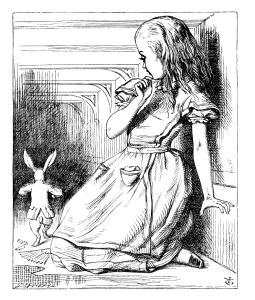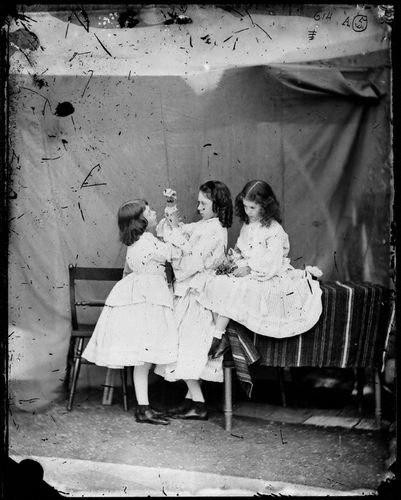“Tell us a story.”
This is the age-old petition of children. There is the delight and wonder of hearing words spun from thin air, where even the creator of a story doesn’t quite know what will happen next. And so on a “golden afternoon” in 1862, the three Liddell sisters, Lorina Charlotte, Alice Pleasance and Edith, ask for a story from Mr. Dodgson. Charles Lutwidge Dodgson was a mathematics lecturer at Christ Church College where the three girls’ father was the dean.
The heroine of the story on this particular day was Alice. In his article “Alice on the Stage,” published in 1887, Dodgson confessed that in some “desperate attempt to strike out some new line of fairy-lore, I had sent my heroine straight down a rabbit-hole, to begin with, without the least idea what was to happen afterwards.”
What happened afterwards is the story of a girl who falls into a land of nonsense, logic games, puzzles and paradoxes. Published under the pseudonym “Lewis Carroll,” Dodgson presented the first manuscript of “Alice’s Adventures Underground” to Alice Liddell as a Christmas gift in 1863. After meeting publisher Alexander Macmillan, Carroll then asked satirical cartoonist John Tenniel to illustrate his Alice.

by Nicola Callahan
Tenniel portrays Alice as a little girl with long blond hair (the blue dress would come later), and this is how we remember her today, although the real life Alice had short, dark hair with bangs cut straight across her forehead. Tenniel’s illustrations were carved into woodblocks by engravers, and then those woodblocks were used as masters for making metal copies to be used in the actual printing of the books. The true first edition was published late in 1865 as “Alice’s Adventures in Wonderland.”
In “The Lobster-Quadrille,” the Gryphon says to Alice,
“Come, let’s hear some of your adventures.”
“I could tell you my adventures — beginning from this morning,” said Alice a little timidly; “but it’s no use going back to yesterday, because I was a different person then.”
 Alice tells the Gryphon and the Mock Turtle her adventure starting with her falling down the rabbit hole, but when they ask her to repeat the story, she cannot tell it twice. So it is with the original creation of Alice’s story; a story that is told aloud is constantly changing and morphing. Alice’s adventures have been around for 150 years, and each time one reads it, there is something new to uncover, something different that wasn’t understood before. As it is with reading stories, they are constantly changing and evolving, and it’s no use going back to yesterday. Alice is not the same as she was 150 years ago. She has grown (not just by eating cake) and has evolved into different literary and illustrated interpretations.
Alice tells the Gryphon and the Mock Turtle her adventure starting with her falling down the rabbit hole, but when they ask her to repeat the story, she cannot tell it twice. So it is with the original creation of Alice’s story; a story that is told aloud is constantly changing and morphing. Alice’s adventures have been around for 150 years, and each time one reads it, there is something new to uncover, something different that wasn’t understood before. As it is with reading stories, they are constantly changing and evolving, and it’s no use going back to yesterday. Alice is not the same as she was 150 years ago. She has grown (not just by eating cake) and has evolved into different literary and illustrated interpretations.
Alice has lasted 150 years because Wonderland is a puzzle that can never fully be solved — it is a place that continues to ask questions. Fall down the rabbit hole and walk through the looking glass. You won’t be the same as you were yesterday.
Original to the Clarion-Ledger



Comments are closed.